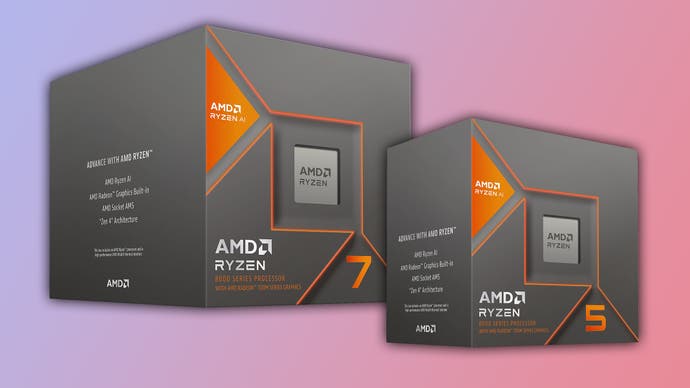AMD Ryzen 7 8700G and Ryzen 5 8600G review: integrated graphics for the win
Truly impressive chips that offer genuine value.
With all the results in - for now - the 8700G and 8600G are fascinating APUs, capable of stellar integrated graphics performance as well as nearly as good frame-rates as a Ryzen 7000 CPU when paired with a discrete graphics card. That's awesome news for system builders, whether you're after a temporary solution while saving up for your dream graphics card or a permanent low-power, low-noise PC that can still play less demanding games at decent frame-rates.
The 8700G and 8600G also include AI capabilities, which we examined in some depth with our review of the Ryzen 9 7940HS APU in a Razer Blade gaming laptop. These capabilities are a neat novelty right now, powering only webcam gimmicks possible with standard CPUs and a few toy examples, but having some kind of AI acceleration on board is still nice to have given the current breakneck pace of AI in the spheres of gaming and content creation.
The fact that you get a competent cooling solution with either chip is also welcome. Based on occasional viewing of the temperature readout of the X670E motherboard, the 8700G did seem to run hotter than the 8600G despite both having the same 65W TDP, so pairing it with a full-size Wraith Spire cooler rather than the shorter Wraith Stealth makes some sense.

While you do get some nice extras, there are restrictions also. Like prior APUs, the 8700G and 8600G don't get access to the current PCIe standard. For the 5700G and its ilk, this was a restriction to PCIe 3.0, and here it's a restriction to PCIe 4.0 versus the faster PCIe 5.0 supported on Ryzen 7000. This isn't a massive deal now, with PCIe 5.0 SSDs being significantly more expensive while generally not outperforming their PCIe 4.0 counterparts in real-world testing, but may become more of a negative point as we move inexorably forward in time.
So are these APUs going to become the new default option for system builders everywhere, even those building PCs with discrete graphics cards? Well, not at their current prices, as the Ryzen 5 7600 is now dipping to $199 while offering more pure CPU grunt than the $239 8600G... but we have seen the 5600G and 5700G occasionally receive deep discounts that put it into contention against its Ryzen 5000 peers, and I wouldn't be surprised if that pattern repeated itself here.
For now then, the 8700G and 8600G are the new premier options in their niche, delivering commendable graphics performance - and decent CPU grunt as well - for a new generation of AM5 motherboards. Of course, these aren't the only Ryzen processors scheduled to arrive this year: AMD's eagerly anticipated full-fat Zen 5 desktop chips are expected to debut by the midpoint of 2024 under the Ryzen 9000 family name. We can only imagine the power level memes.
AMD Ryzen 7 8700G and Ryzen 5 8600G analysis
- Introduction, test rig and content creation benchmarks
- iGPU gaming benchmarks: F1 23, CS:GO, Far Cry 6, Cyberpunk 2077 [this page]
- Gaming benchmarks: Flight Simulator 2020, Hitman 3, Ashes of the Singularity
- Gaming benchmarks: Counter-Strike: GO, Metro Exodus EE, Black Ops Cold War
- Gaming benchmarks: Cyberpunk 2077, Far Cry 6, Crysis 3 Remastered
- AMD Ryzen 7 8700G and Ryzen 5 8600G: the Digital Foundry verdict [this page]








